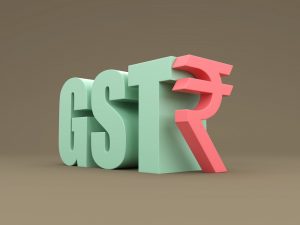 The government is accelerating efforts to overhaul the Goods and Services Tax (GST) regime as part of the proposed GST 2.0 reforms, with Finance Minister Nirmala Sitharaman scheduled to meet representatives from India Inc on May 27, two government sources said.
The government is accelerating efforts to overhaul the Goods and Services Tax (GST) regime as part of the proposed GST 2.0 reforms, with Finance Minister Nirmala Sitharaman scheduled to meet representatives from India Inc on May 27, two government sources said.
The meeting will see key presentations from industry leaders on their expectations and recommendations for the next phase of GST reforms.
“FM is meeting with India Inc. There will be presentations on GST 2.0,” one of the officials told Moneycontrol.
With GST 2.0, the Centre is aiming for a more fundamental reform. The upcoming dialogue is expected to offer critical insights and help build consensus with the states for a unified reform path.
Another official added that the industry would give their inputs in shaping the reform roadmap. “India Inc will give a presentation on GST reforms that they are seeking,” the source said.
The Centre’s push comes amid rising calls for rationalising the GST structure to enhance ease-of-doing-business and boost consumption. One of the key proposals under consideration is the phasing out of the 12 percent tax slab to streamline the four-tier GST system, which currently includes 5 percent, 12 percent, 18 percent, and 28 percent rates.
Call for simpler structure
The Centre is advocating a three-rate system, comprising only the 5 percent, 18 percent, and 28 percent slabs. This simplification, officials argue, will reduce litigation, improve compliance, and help in boosting consumer demand.
“Efforts are ongoing to rationalise the GST structure, and the government is determined to move towards a simpler regime that supports economic growth without compromising on revenue,” the official said.
Economists have also weighed in, noting that consumption responds more readily to indirect tax changes than to income tax variations. Rationalising the GST structure is likely to have a more immediate impact on boosting consumption as indirect taxes directly affect spending patterns.
Classification of food items
One critical component of the reform push is resolving long-standing ambiguities in the classification of goods – especially food items – under different tax slabs. These disputes have frequently led to litigation and revenue leakages.
“Classification issues, particularly those related to food items, are being prioritised due to the high frequency of disputes and their impact on revenue collection,” the official said, adding that the government is looking to bring more clarity and uniformity in the treatment of such items.
Since its rollout in July 2017, GST has emerged as a central pillar of India’s indirect taxation system. However, stakeholders have repeatedly flagged complexities in the rate structure, classification challenges, and compliance burdens as key bottlenecks. The Group of Ministers (GoM) on GST rate rationalisation has so far undertaken incremental changes by moving items across slabs, without altering the overall structure.
Source: Money Control


